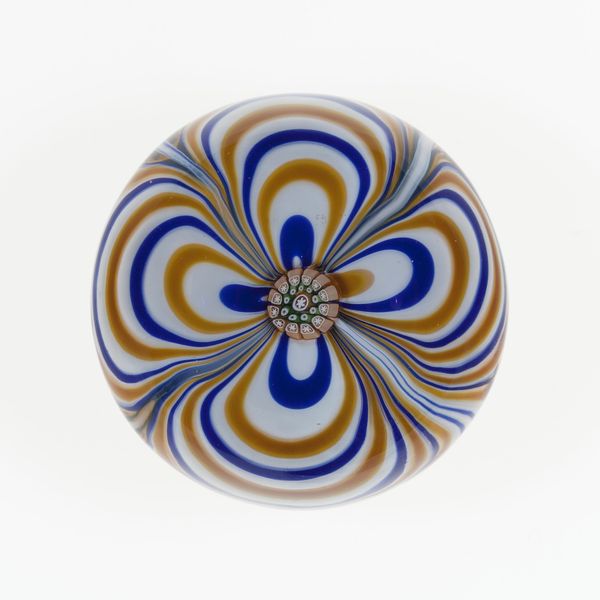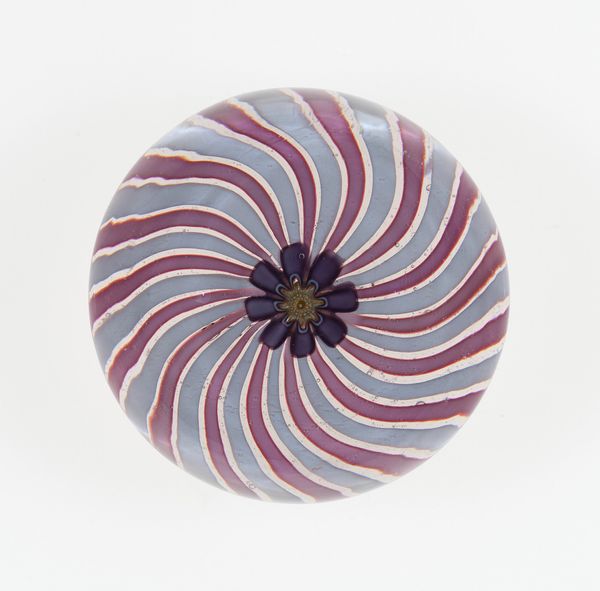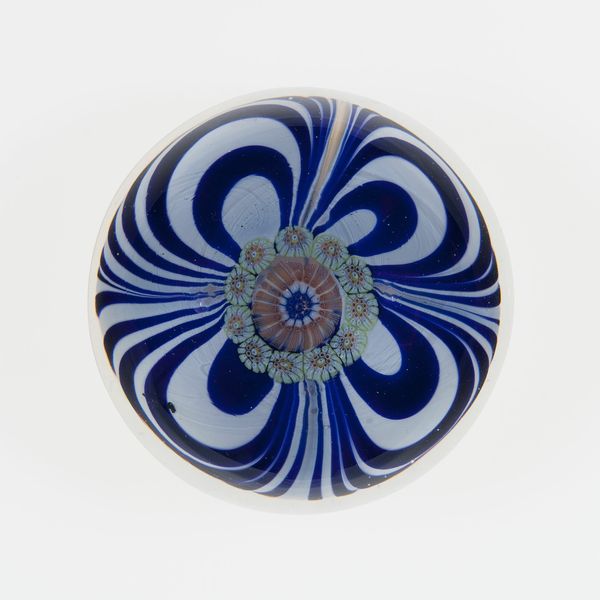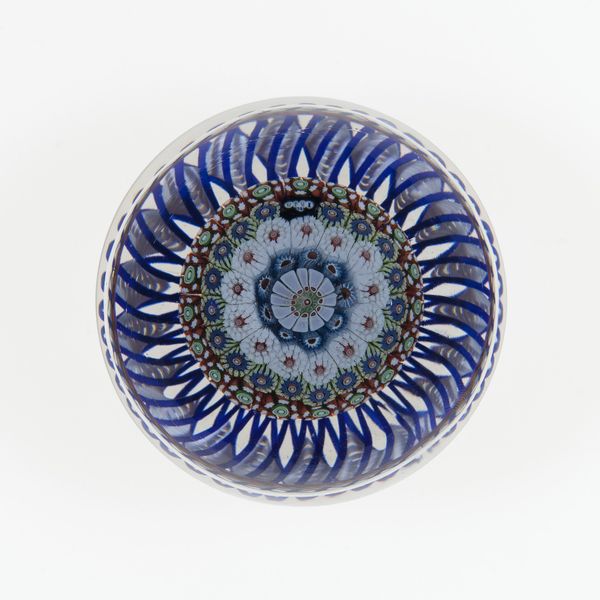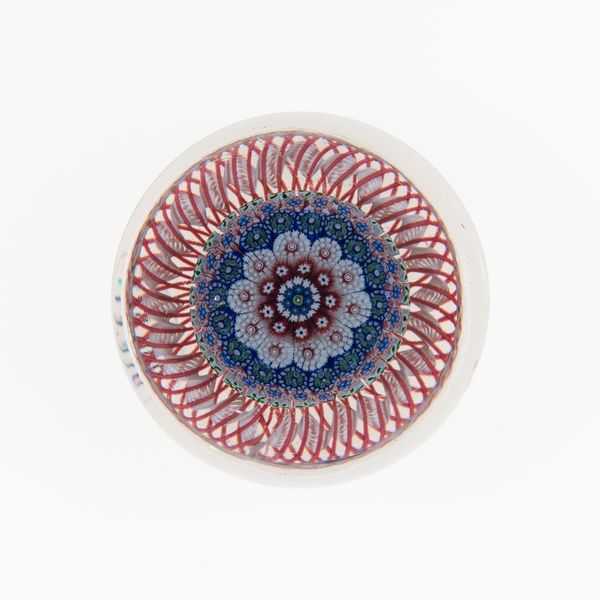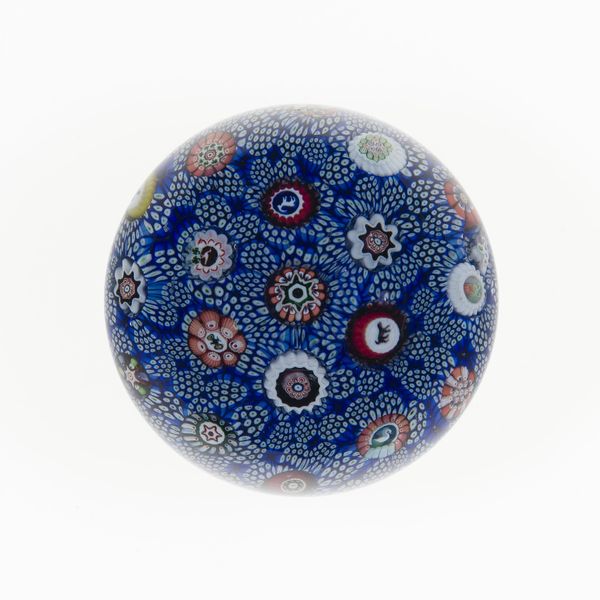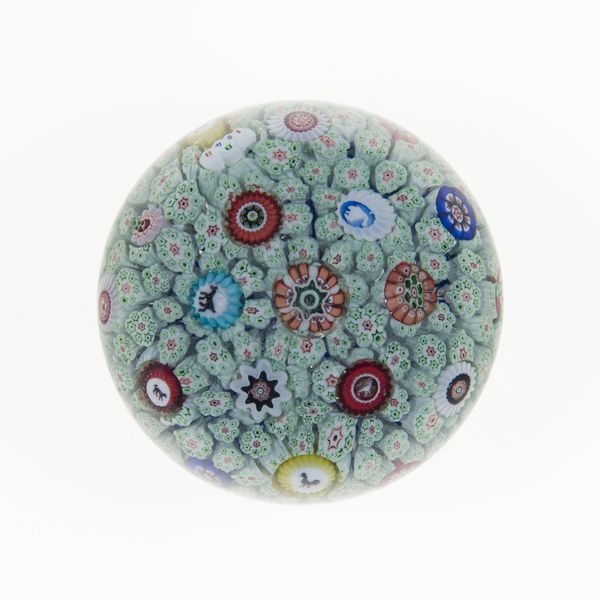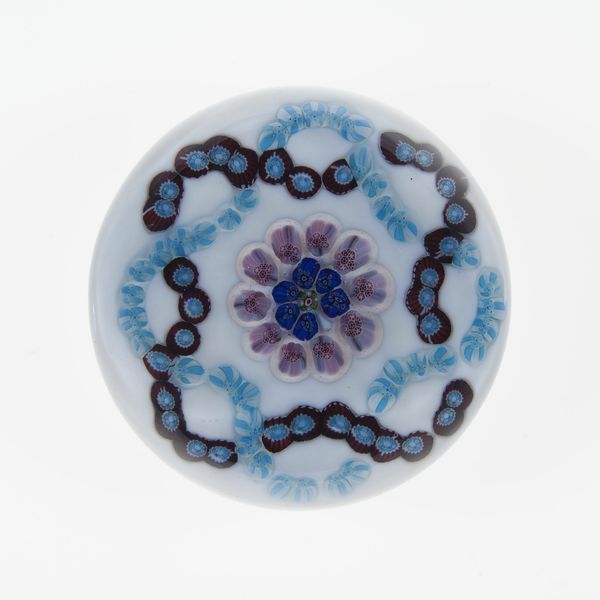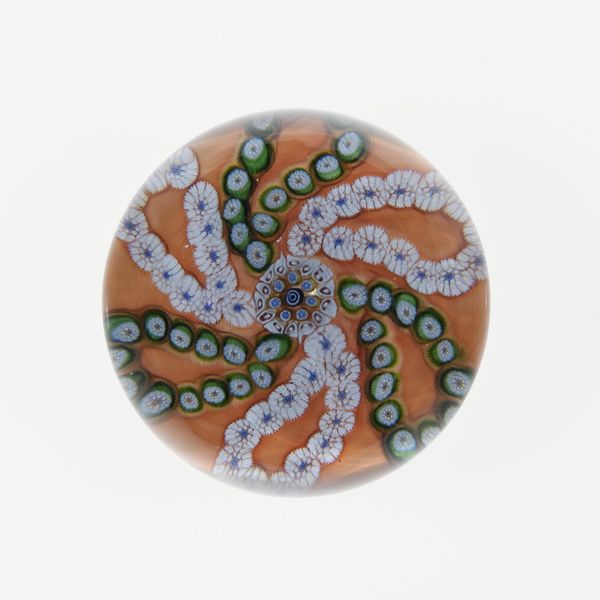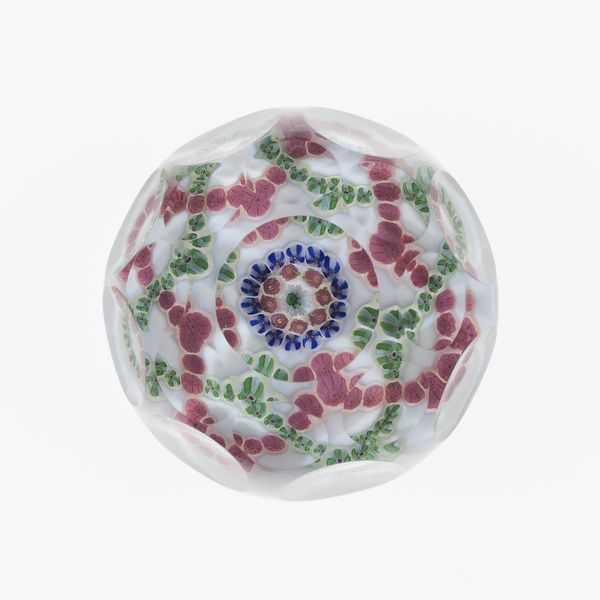
glass
#
glass
#
geometric
#
decorative-art
Dimensions: Diam. 7.3 cm (2 7/8 in.)
Copyright: Public Domain
Editor: So, this is "Paperweight" from Compagnie de Saint Louis, dating back to the 19th century. It’s made of glass. The swirl pattern, almost floral but very geometric… it feels both calming and a little mesmerizing. How do you interpret this work? Curator: This seemingly simple paperweight exists at the intersection of industrialization, decorative arts, and the rise of consumer culture. Considering its purpose – holding down papers – it’s interesting to think about the democratisation of literacy in the 19th century, when printed materials became more widespread. Editor: I see what you mean. It is like this humble object signifies this historical shift. Curator: Exactly. The intricate glasswork also reflects advances in technology. Yet, unlike high art that often serves a purely aesthetic or intellectual purpose, this has a functional aspect linked to domestic life. Does that give you pause when thinking about class distinctions during that period? Editor: Yes, because mass production meant it was more accessible. Yet it's obviously beautiful craftsmenship, indicating higher end consumption too. So, even an everyday object became implicated in displays of status and taste. Curator: Precisely. Also, its circular shape and geometric designs invite associations with concepts of harmony, balance, and, potentially, ideas around control and containment – relating back to this function of suppressing or holding papers down. What does that trigger for you? Editor: Fascinating. It’s almost like this tiny, decorative object holds a lot of social weight when viewed through this lens. Curator: Right. Seeing decorative arts in this way highlights how gender, class, and technology influence artistic creation even outside the conventional high-art canon. Editor: I'll never look at a paperweight the same way again.
Comments
No comments
Be the first to comment and join the conversation on the ultimate creative platform.
